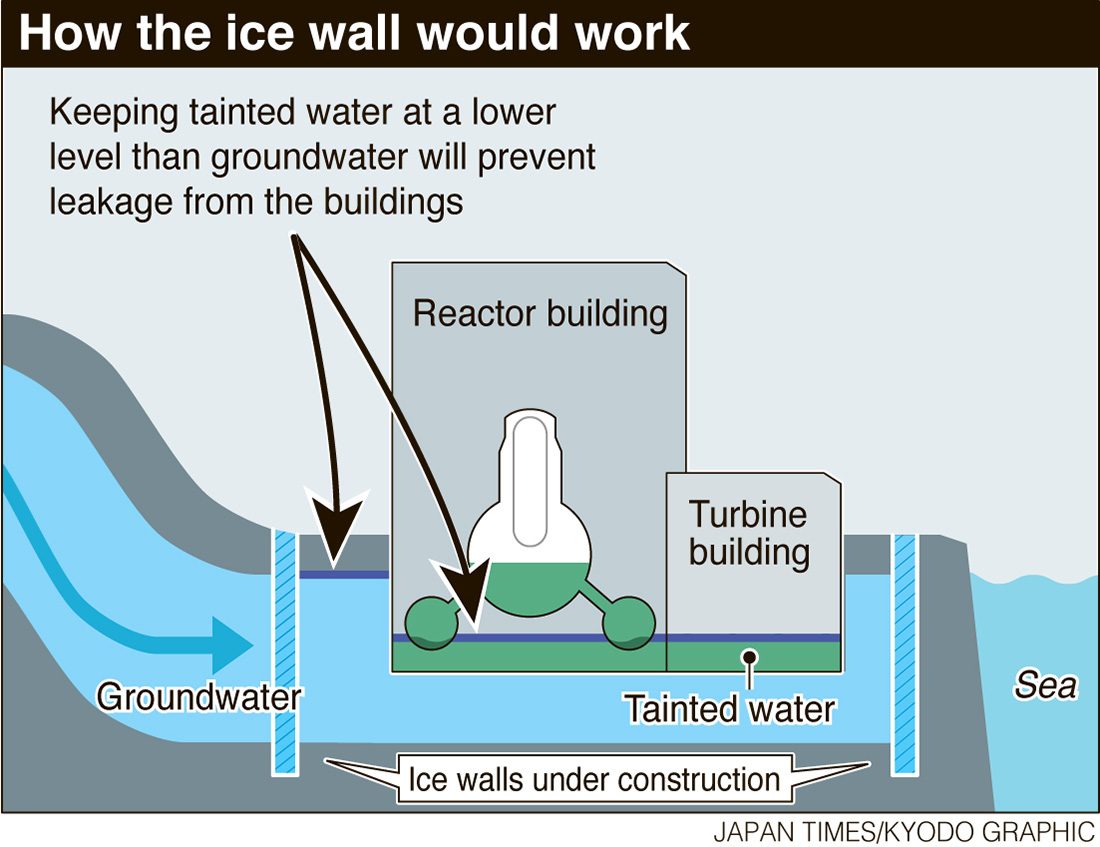It has now been five years since the nuclear disaster at Fukushima. After the meltdown of the reactors one of the continuing problems was the leakage of groundwater with radioactive contamination into the Pacific Ocean. Tanks were hastily constructed and contaminated water was pumped into them. Eventually, the leakage overwhelmed the tanks. It was decided that it might be possible to sink a series of wells and inject a cooling solution into them to freeze the groundwater to form a barrier to prevent contaminated groundwater from getting to the Pacific.
Almost sixteen hundred holes were sunk thirty feet into the ground at Fukushima. A cooling solution at thirty degrees below zero was pumped down the tubes. It was supposed to create a solid wall of ice that would form an impenetrable barrier to the contaminated ground water. Almost three hundred million dollars was spent by the Japanese government to create the underground frozen wall.
Prior to the creation of the ice wall, TEPCO was pumping three hundred tons of contaminated ground water to prevent it escaping into the Pacific. Recently, they have been pumping up one hundred and thirty tons of water. This is still almost double the seventy tons that was their target. In October, the Japanese Nuclear Regulatory Agency (NRA) told TEPCO that they could not expect the frozen wall to be effective at containing the contaminated ground water.
One of the big concerns of the NRA had to do with the flow of groundwater from the mountains behind the Fukushima site. They had been worried that blocking the flow of water from the mountains would lower the level of water in the ruins of the reactors to the point where more of the highly contaminated water would flow into the Pacific. Eventually they concluded that the ice was ineffective and there was not a big problem with building an ice wall on the mountain side. They issued a permit to TEPCO to proceed with the ice wall by the mountains. TEPCO is going to start freezing five sections near the mountains in the near future.
Now the Japanese Nuclear Regulatory Agency has concluded that because the wall has been ineffective, it should be considered a minor part of the remediation effort. They cited the finding that the ground water that was being pumped up outside the frozen wall on the Pacific Ocean side was well above the targeted reduction. They advised TEPCO to use pumps to deal with the contaminated water instead of the frozen wall.
A professor of geotechniques at the University of Kyoto recently said that there was a lack of knowledge about the way that the cooling solution was freezing the soil at Fukushima. He advised that more research was needed and that TEPCO should drill a test well.
The disaster happened five years ago and TEPCO and the Japanese government are still not sure how to deal with the aftermath. This is part of the reason that estimates of the ultimate cost of the cleanup of Fukushima have recently doubled.
